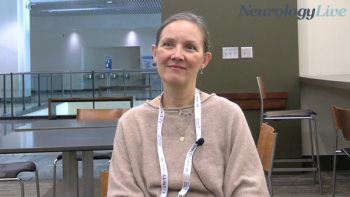
FDA Approves Bristol Myers Squibb’s Reblozyl for Expanded Indication in Myelodysplastic Syndromes
The FDA’s decision was based on data from the randomized, open-label phase 3 COMMANDS clinical trial.
The FDA has approved
The decision was based on data from the randomized, open-label phase 3 COMMANDS clinical trial (NCT03682536) that assessed luspatercept-aamt against standard of care treatment with the erythropoiesis-stimulating agent (ESA) epoetin alfa in patients with IPSS-R MDS who were RBC transfusion dependent and had not previously been treated with an ESA. In COMMANDS, luspatercept-aamt was shown to be superior to treatment with epoetin alfa regardless of patients' ring sideroblast status in terms of RBC transfusion independence and simultaneous hemoglobin increase.
“For patients with lower-risk MDS, current standard therapies, including ESAs, have provided limited benefit in controlling anemia with only 1 in 3 patients responding for a duration of 6-18 months,” Guillermo Garcia-Manero, MD, the trial's lead investigator and chief of the Section of Myelodysplastic Syndromes at The University of Texas MD Anderson Cancer Center, said in a statement.1 “Results from the COMMANDS study showed nearly twice as many patients treated with Reblozyl achieved transfusion independence of at least 12 weeks and concurrent hemoglobin increase compared to epoetin alfa. Today’s approval represents an important advancement for patients with lower-risk MDS.”
In May 2023, Bristol Myers Squibb reported findings from an interim data analysis for COMMANDS.3 Among 147 patients who were treated with luspatercept-aamt and evaluable, 86 patients (58.5%) achieved the study’s primary end point of RBC transfusion independence (RBC-TI) for at least 12 weeks with a concurrent mean hemoglobin (Hb) increase of at least 1.5 g/dL within the first 24 weeks; by contrast, among the 154 patients in the study who were treated with epoetin alfa and evaluable, just 48 patients (31.2%) achieved the primary end point (P < .0001). Furthermore, 109 patients (74.1%) who were treated with luspatercept-aamt achieved a key secondary end point for erythroid response of at least 8 weeks during the trial’s first 24 weeks; only 79 (51.3%) of the patients who were treated with epoetin alfa achieved this end point (P < .0001). Another key secondary end point, RBC-TI of at least 24 weeks during the first 24 weeks of treatment, was achieved by 70 (47.6%) of the patients who received luspatercept-aamt and 45 (29.2%) of the patients treated with epoetin alfa (P = .0006). The median duration of response of RBC-TI ≥12 weeks (Week 1 through end of treatment) for patients who received luspatercept-aamt was 126.6 weeks; for patients treated with epoetin alfa, it was 77 weeks. Ninety-eight patients (66.7%) treated with luspatercept-aamt achieved RBC-TI of at least 12 weeks and 71 patients (46.1%) treated with epoetin alfa achieved the same (P = .0003).1
“The majority of patients with MDS experience chronic anemia and require RBC transfusions,” Tracey Iraca, the executive director of the MDS Foundation, added to the statement.1 “The approval of Reblozyl in the first-line treatment of anemia for patients with lower-risk MDS represents a crucial step in making transfusion independence possible for more patients.”
In terms of safety, Bristol Myers Squibb reported that the luspatercept-aamt data from COMMANDS was consistent with the therapy’s established safety profile and that no new safety signals were observed. Among 178 patients treated with luspatercept-aamt included in the safety set, 9.6% had cases of anemia, 6.2% had cases of thrombocytopenia, 5.1% had cases of neutropenia, 14.6% had cases of fatigue, 14.6% had cases of diarrhea, and 12.9% had cases of peripheral edema. Meanwhile, among 176 patients in the trial’s safety set who received epoetin alfa, 9.7% had cases of anemia, 1.7% had cases of thrombocytopenia, 7.4% had cases of neutropenia, 6.8% had cases of fatigue, 11.4% had cases of diarrhea, and 6.8% had cases of peripheral edema. Fatigue, diarrhea, hypertension, peripheral edema, nausea, and dyspnea were the most common treatment-emergent adverse events in the trial, occurring in over 10% of patients. Bristol Myers Squibb noted that over 90% of the patients in COMMANDS were treated outside the US and received an epoetin alfa product not licensed in the US.
The FDA-approved labeling includes warnings and precautions related to thrombosis/thromboembolism, hypertension, extramedullary hematopoietic masses, embryo-fetal toxicity, and drug abuse potential in healthy athletes; a recommendation against breastfeeding during and for 3 months after dosing is also present. For patients with MDS and no prior treatment with an ESA specifically, it is noted that grade 3 or higher cases of hypertension and dyspnea occurred in 2% or more of treated patients. Separate lists of adverse reactions are present for the ESA-refractory and beta thalassemia indications.
Luspatercept-aamt is a receptor fusion protein consisting of elements of the human activin receptor type IIB and human IgG1.2 Its ongoing development and commercialization is being carried out in a global collaboration between Bristol Myers Squibb and Merck.4 Luspatercept-aamt was previously approved by the FDA for the treatment of anemia in 2 other indications: adult patients with beta thalassemia who require regular RBC infusions and adult patients with very low- to intermediate-risk MDS with ring sideroblasts or with myelodysplastic/myeloproliferative neoplasm with ring sideroblasts and thrombocytosis who require 2 or more RBC units over 8 weeks and whose prior treatment with an ESA was not successful. In May 2023, Bristol Myers Squibb reported that alongside the FDA’s acceptance of the biologics license application leading to today’s decision, the European Medicines Agency had validated a type II variation application for an expanded indication for luspatercept-aamt to treat anemia in adult patients with very low- to intermediate-risk MDS who may require RBC transfusions and have not previously received treatment with an ESA.
REFERENCES
1. U.S. FDA approves Bristol Myers Squibb’s Reblozyl® (luspatercept-aamt) as first-line treatment of anemia in adults with lower-risk myelodysplastic syndromes (MDS) who may require transfusions. News release. Bristol Myers Squibb. August 28, 2023. Accessed August 28, 2023. https://news.bms.com/news/corporate-financial/2023/U.S.-FDA-Approves-Bristol-Myers-Squibbs-Reblozyl-luspatercept-aamt-as-First-Line-Treatment-of-Anemia-in-Adults-with-Lower-Risk-Myelodysplastic-Syndromes-MDS-Who-May-Require-Transfusions/default.aspx
2. Full prescribing information for Reblozyl. FDA. April 2020. https://www.accessdata.fda.gov/drugsatfda_docs/label/2020/761136orig2lbl.pdf
3. Bristol Myers Squibb to present first results at ASCO and EHA from phase 3 COMMANDS study of Reblozyl® (luspatercept-aamt) in first-line treatment of anemia in adults with lower-risk myelodysplastic syndromes (MDS). News release. Bristol Myers Squibb. May 25, 2023. Accessed August 24, 2023. https://news.bms.com/news/corporate-financial/2023/Bristol-Myers-Squibb-to-Present-First-Results-at-ASCO-and-EHA-from-Phase-3-COMMANDS-Study-of-Reblozyl-luspatercept-aamt-in-First-Line-Treatment-of-Anemia-in-Adults-with-Lower-Risk-Myelodysplastic-Syndromes-MDS/default.aspx
4. U.S. FDA accepts for priority review supplemental biologics license application and EMA validates application for Reblozyl® (luspatercept-aamt) as first-line treatment of anemia in adults with lower-risk myelodysplastic syndromes (MDS). News release. Bristol Myers Squibb. May 1, 2023. Accessed August 24, 2023. https://news.bms.com/news/details/2023/U.S.-FDA-Accepts-for-Priority-Review-Supplemental-Biologics-License-Application-and-EMA-Validates-Application-for-Reblozyl-luspatercept-aamt-as-First-Line-Treatment-of-Anemia-in-Adults-with-Lower-Risk-Myelodysplastic-Syndromes-MDS/default.aspx
Newsletter
Stay at the forefront of cutting-edge science with CGT—your direct line to expert insights, breakthrough data, and real-time coverage of the latest advancements in cell and gene therapy.











































